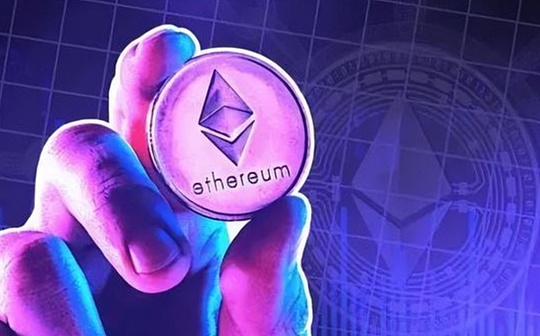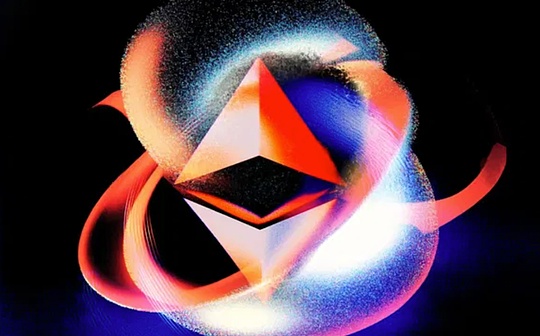How do U.S. state governments choose public chains for stablecoin issuance?

転載元: chaincatcher
06/21/2025·14hAuthor: Zhi Wubuyan
I read a news last night that Wyoming, USA, chose a public score for the stablecoin WYST, which it will issue. Finally, 11 chains were included in the shortlist. Aptos and Solana tied for first place with 32 points, Sei followed closely with 30 points, while Ethereum and Yibu L2 only scored 26 points or less, which may be quite different from the ecological activity and currency price of public chains that everyone feels in daily life. How did you get this score? I was very curious, so I learned it with the GPT teacher.
1/ First, I would like to praise the US state government’s build in public. The Wyoming Stable Coin Commission behind the stablecoin WYST was established in March 2023 based on the state's Stable Token Act. This committee has a public notion document, which contains project introduction, meeting calendar and records, scoring standard results, memo, Q&A, contact information, and lists its own YouTube channel, X account, Warpcast account and Github account, which is more serious and transparent than many unconscious project parties now.
Those who are interested can go and watch directly.
The committee initially selected 28 public chains in Q4, 2024. First, 14 were screened out based on whether there is no permission to access, supply transparency, on-chain analysis, and whether it can freeze four right and wrong questions; secondly, 9 indicators (3 points per item), including network stability, number of active users, TVL, stablecoin market value, TPS, transaction fees, transaction finality time, block block time, and whether to register in Wyoming; finally, 2 points per item (privacy, interoperability, smart contract/programmability, use cases, partners) and 6 additional risks each -2 points (entity violations, team violations, security vulnerability history, poor network availability, lack of vulnerability bounty, and lack of code maintenance) respectively.
Finally, it is recommended to include 5 Layer 1 main chains: Solana (32 points), Avalanche (26 points), Ethereum (26 points), Stellar (24 points), Sui (26 points) and 4 Layer 2 chains that meet the criteria: Arbitrum (26 points), Base (25 points), Optimism (19 points), and Polygon (26 points) as the "candidate blockchain".
3/Aptos and SEI were actually newly included in the selection only in Q1 this year. In this quarter, the committee updated the selection criteria and added the "with or without supplier support" to the right and wrong standards, namely, "blockchain must be supported by the committee's cooperative manufacturers to support development, auditing, and infrastructure deployment. It can be undertaken by the foundation and approved."
An update was made, "chain must be fully indexed and supported by on-chain analysis platforms (such as Chainalysis, TRM Labs) that the committee cooperates with."
Two new items have been added to the additional advantage bonus points, namely:
- Emerging Market Trends: Whether it carries emerging track projects such as AI, DePIN, virtual reality, and game assets
- Foundation Support: Can the Foundation support one or all of technology development, WYST liquidity, and marketing promotion
In this scoring, Aptos and SEI scored 32 points and 30 points respectively, and were added to the candidate chain.
4/So how does this score difference occur? I first made a comparison chart of key differences based on the core indicators. Please note that since the new round of scoring has not re-rated the 9 public chains that have been selected before, some of the data here are from the end of 2024 and are not the latest.

It can be seen that Ethereum's TVL is a cliff-like lead, but this decentralized chain still suffers a lot in terms of transactions per second (TPS), transaction finality time, transaction fees per transaction, and block block time. It can also be seen here that the diversion of Layer2 has resulted in the number of active users on the Ethereum main network being only on the same magnitude as SEI, which is much behind Aptos and Solana.
But how can Aptos be ranked at the highest score with Solana? After reading, I found that on the one hand, Aptos is indeed very balanced, with strong compliance, fast speed, low cost and relatively stable network. On the other hand, it is also because the second round of ratings added two scoring points in the additional advantage plus points, but Solana did not re-participate in this round of scoring. If these two items are removed, Solana should be the one with the highest actual score.
5/It is worth noting here that Ethereum fans are that although Ethereum has always claimed that it will be the best choice for carrying real assets on the chain, it actually falls into the government-level technology selection. Similar to a licenseless network is a threshold. Just pass it. Network stability only accounts for one item in the core indicators; lack of technical barriers and insufficient network availability is a risk deduction item. Solana has been deducted from the line and used to be a machine, and each deducted 1 point, but it has little impact on the overall situation. There is no scoring for the degree of decentralization, and the state government pays more attention to whether it can be frozen and whether it has an entity in Wyoming; the vast majority of the core indicators are performance, cost and scale.
Of course, from the very beginning, this state-level stablecoin issuance stated that it must abide by the principle of "multi-chain support, technical neutrality". In the future, the rules will continue to be updated and feedback will be collected. At the same time, unfinalized chains are welcome to continue to submit applications to participate in the selection. Therefore, there are theoretical opportunities for public chains that have entered the shortlist and even those who have not yet entered the list.
6/In addition to the selection of public chains, this state-level stablecoin project in Wyoming is also worth noting. As the first state in the United States to issue stablecoins, WYST was originally planned to be launched before July 4, but at the regular meeting at the end of May, this timeline has been postponed to the third quarter of 2025 , with a new recommendation date of August 20. The subsequent work also involves the solicitation of public opinions and final approval of reserve management rules, the formulation of the committee's exclusive general ledger/accounting account list, the establishment of trust accounts and liquidity fund accounts with third-party custodians, and the contact with licensed service providers, including centralized exchanges, payment platforms, digital wallets, market makers, for WYST purchases and resales, etc.

Finally, the reserves behind the stablecoins will be managed by Franklin Templeton Fund, Chainalysis will be responsible for on-chain analysis, cooperate with LayerZero and Fireblocks to complete integration, complete the decentralized verification network and official website launch, deploy the WYST contract to the main network before August 20, and then release a public statement at the Wyoming blockchain seminar.
In addition to Wyoming, Nebraska has authorized an entity named Telcoin to issue a state-backed stablecoin, temporarily called eUSD, through its "Financial Innovation Act." Tinian Island, an overseas territory under the US federal government, attempted to issue a dollar stablecoin called Marianas US Dollar (MUSD), which was rejected by the governor in April this year, and in May the Senate overthrew the governor's veto.
This situation where American states and major companies are ready to issue their own stablecoins can easily remind people of the era of free banking from 1837 to 1866. At that time, states, cities, private banks, railways and construction companies, shops, restaurants, churches and individuals issued about 8,000 different currencies by 1860, with a wide variety and lacking unified standards. The picture included in this article is the 1 dollar private currency of the Delaware Bridge Company in New Jersey from 1836 to 1841.
7/There are a lot of discussions about RMB stablecoins recently, and some large companies are also eager to try. After the question of whether to have a question, it may be which chain to run on. Is it possible to launch another special chain, whether to use the affiliate chain of large companies, such as Ant Chain, JD.com, to connect to common international public chains, or to use some domestic public chains, such as Hashkey Chain, Conflux, etc., this issue is a new issue for governments and enterprises in China, the United States and even other countries around the world. This scoring system and public disclosure system in Wyoming may not be perfect, but it can be regarded as a way for latecomers. In the future, we should see more interesting governance progress.


 jinse
jinse
